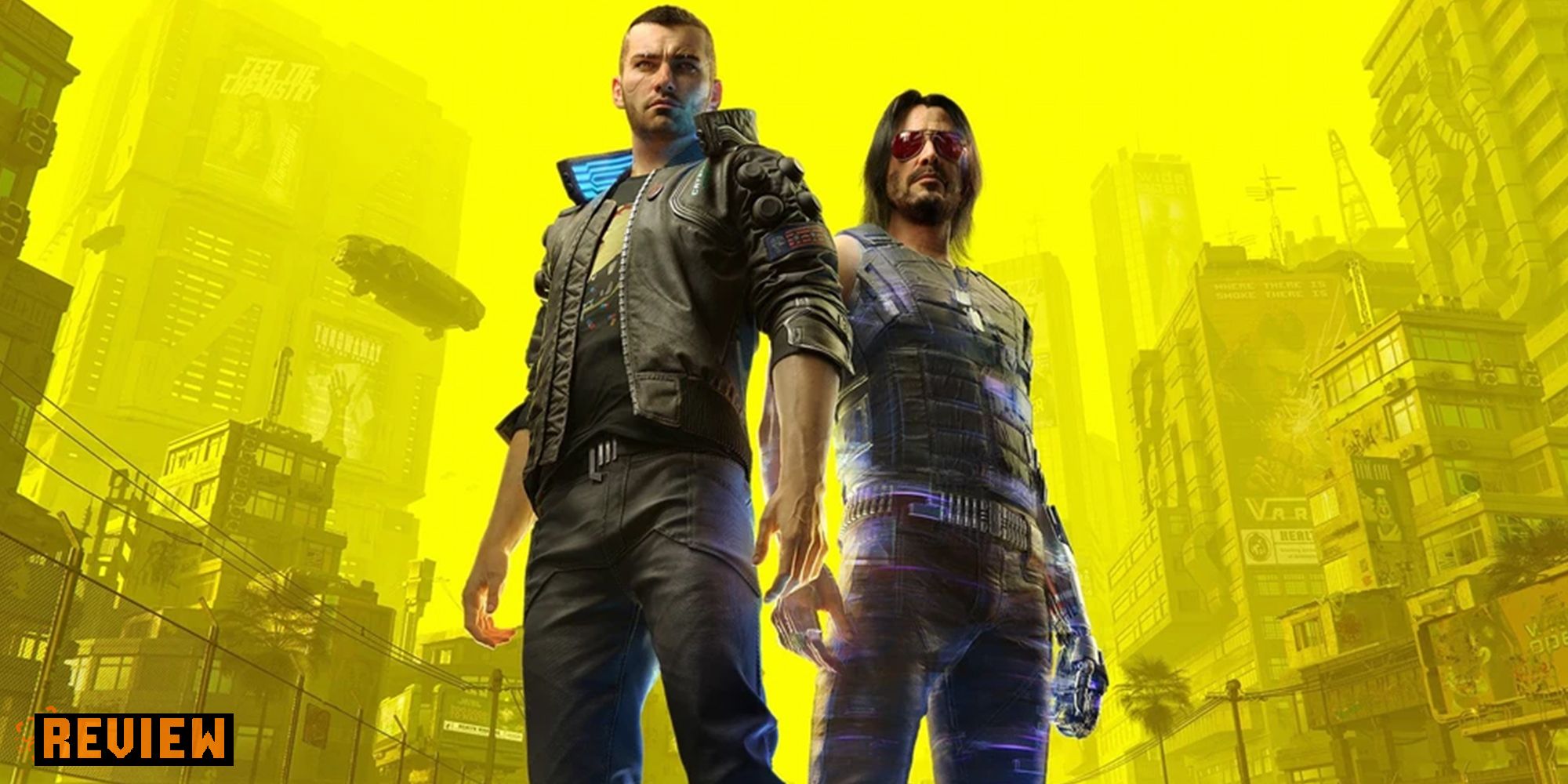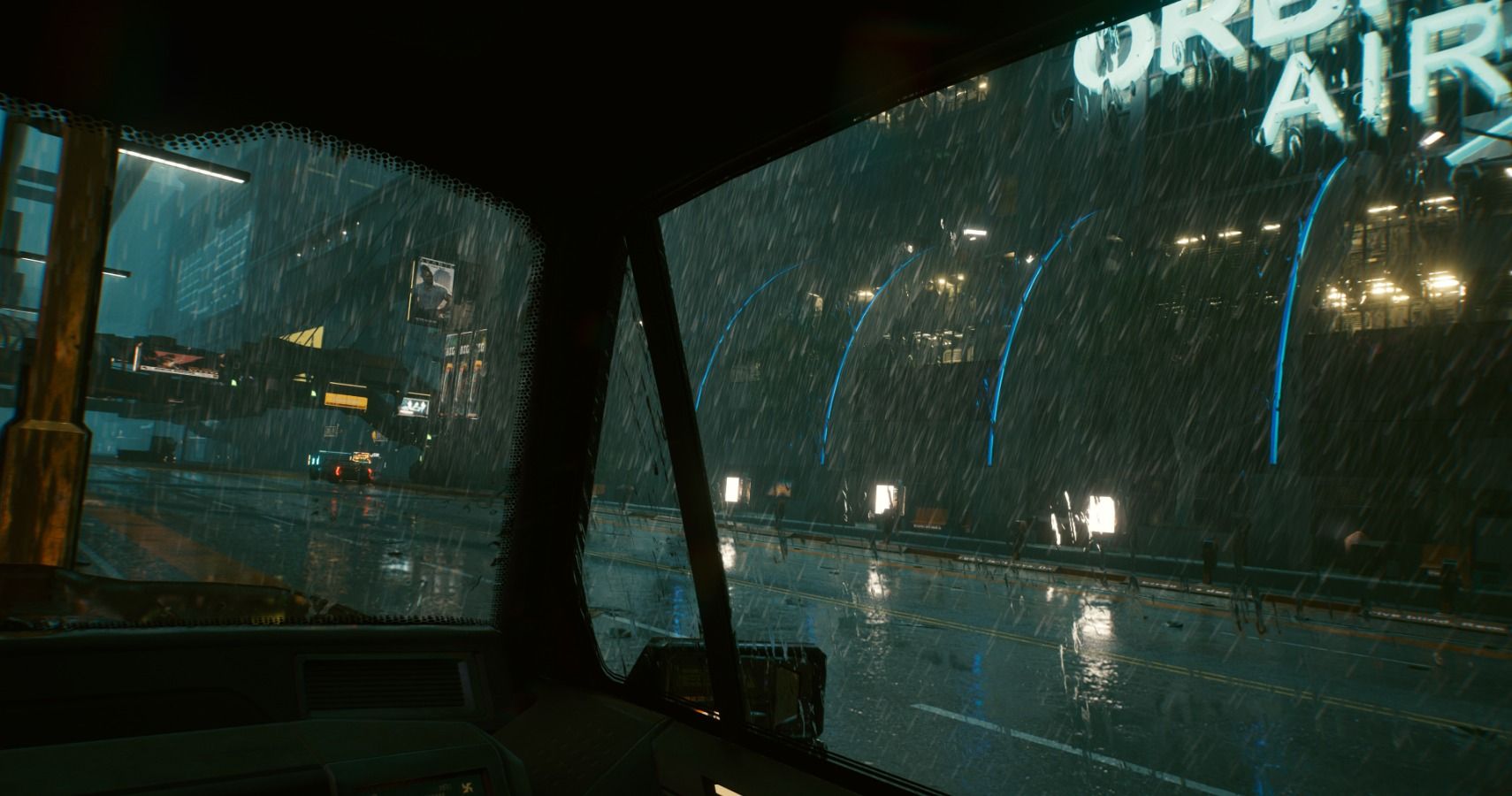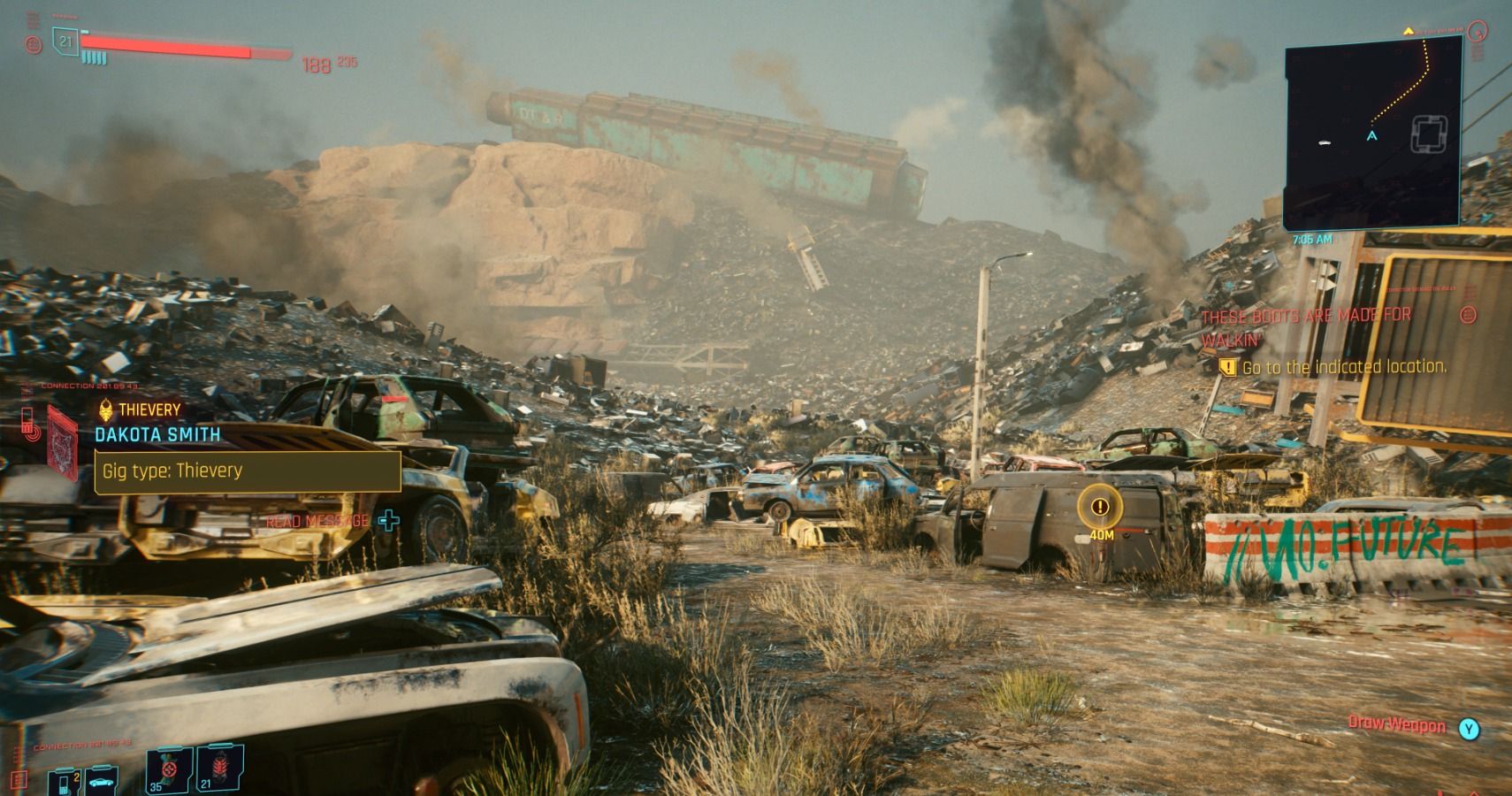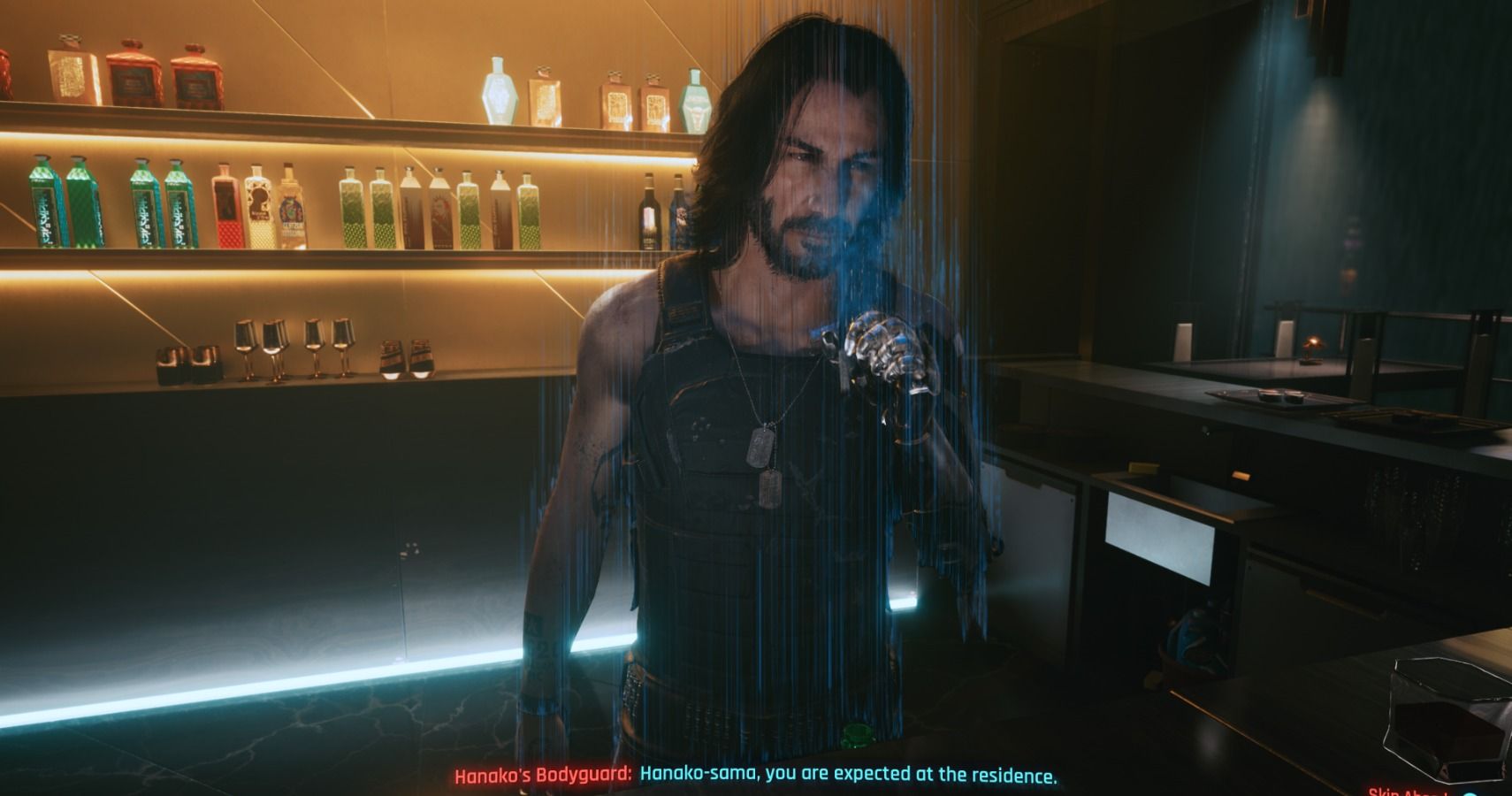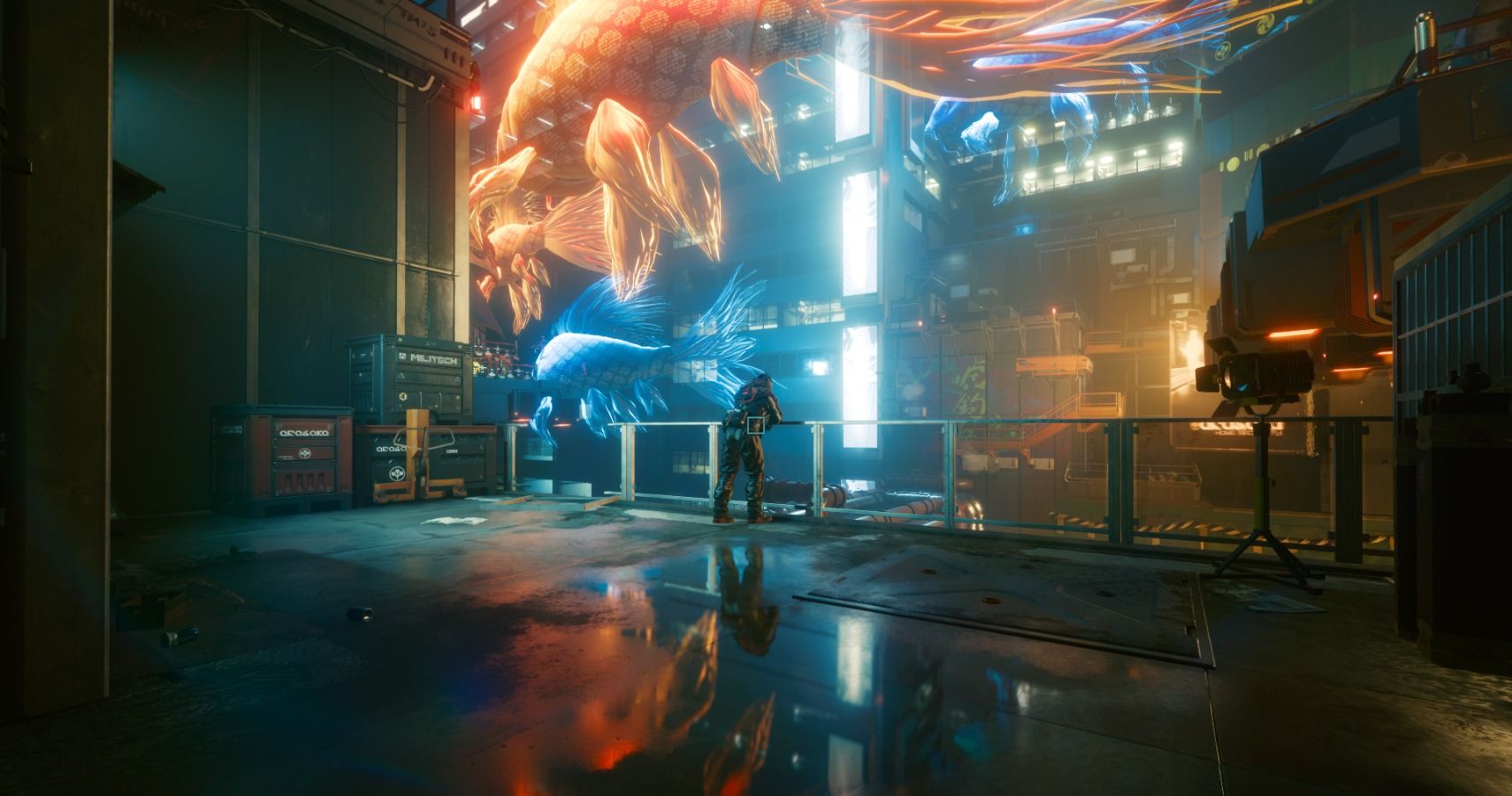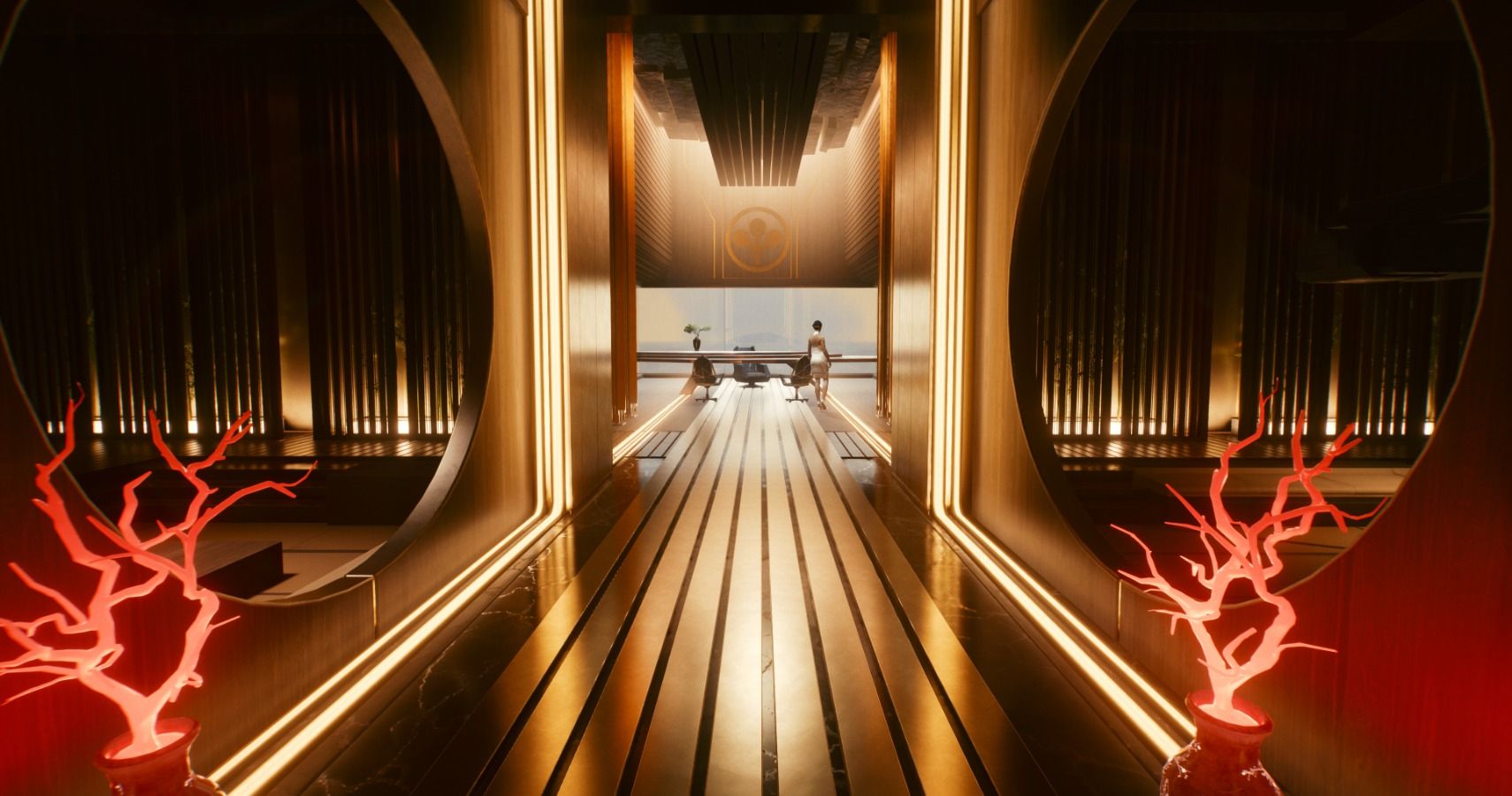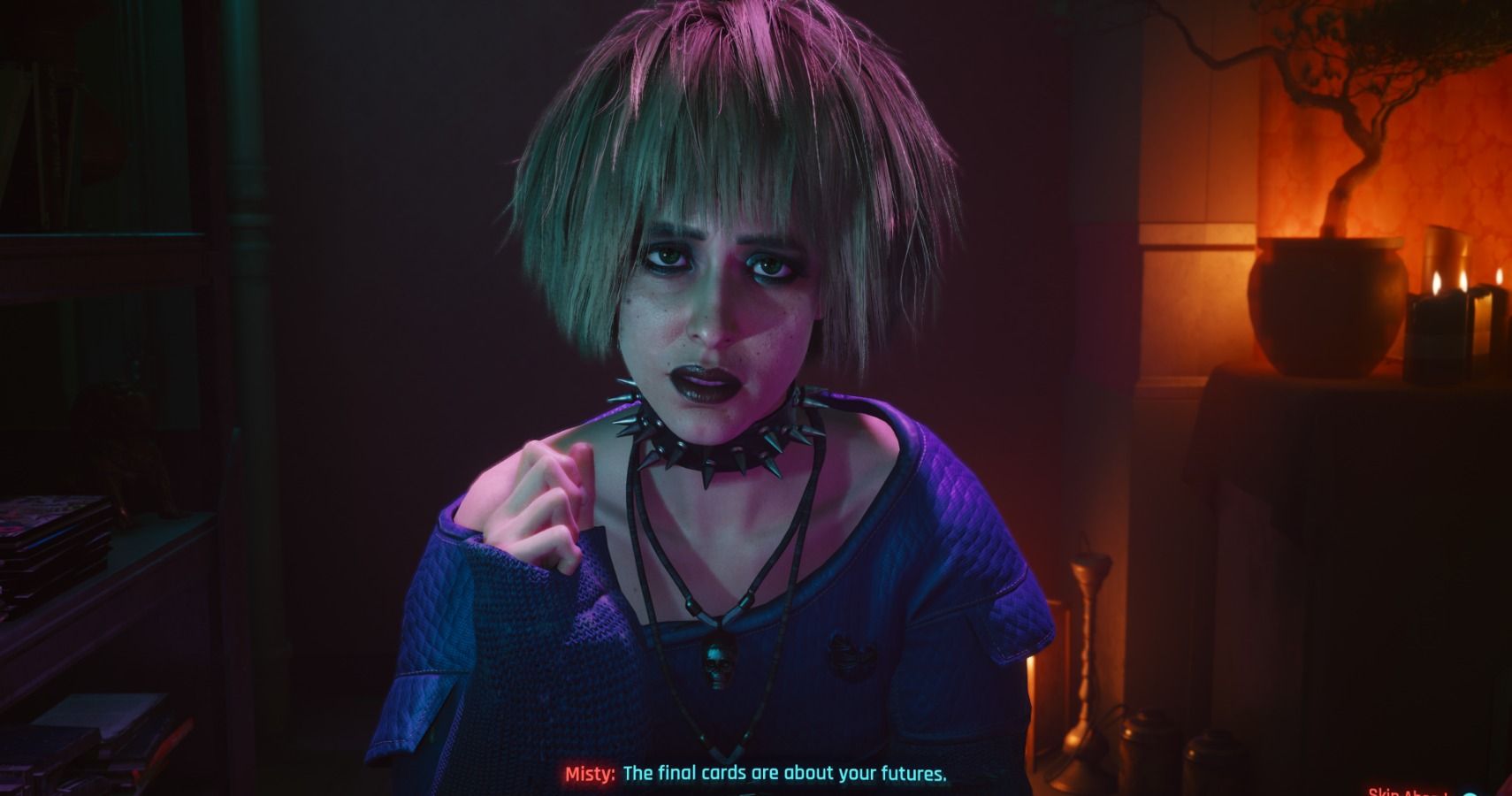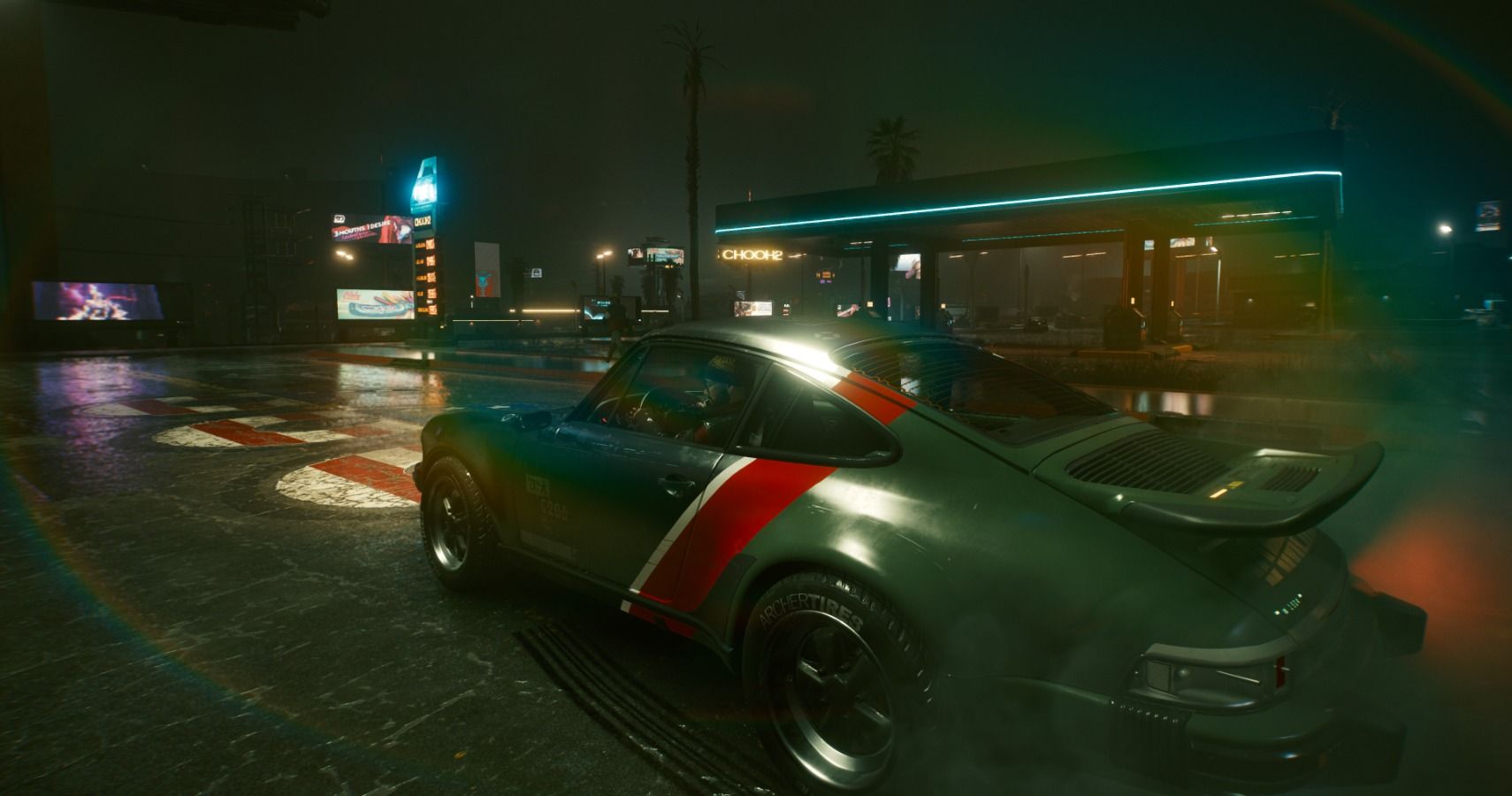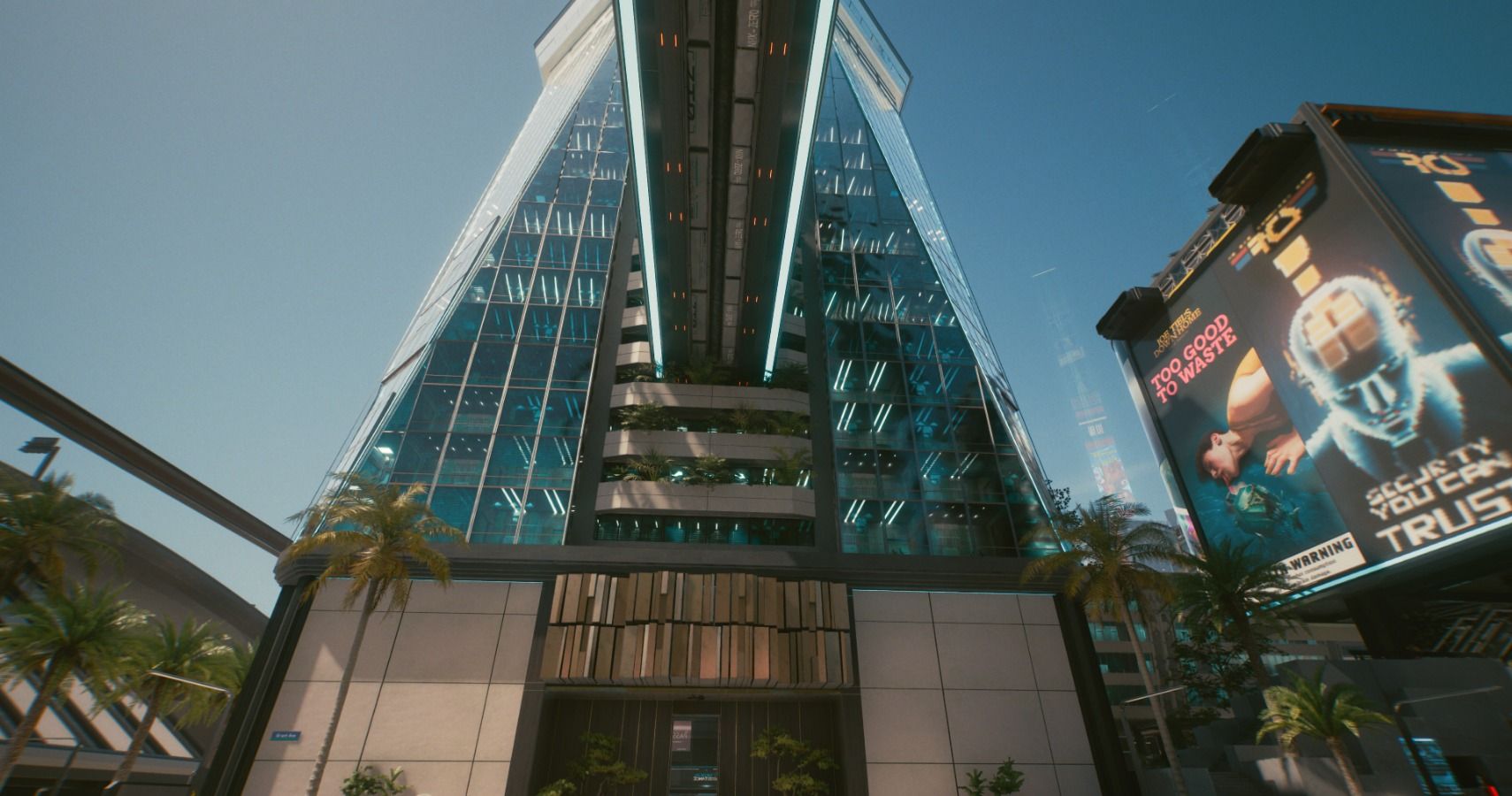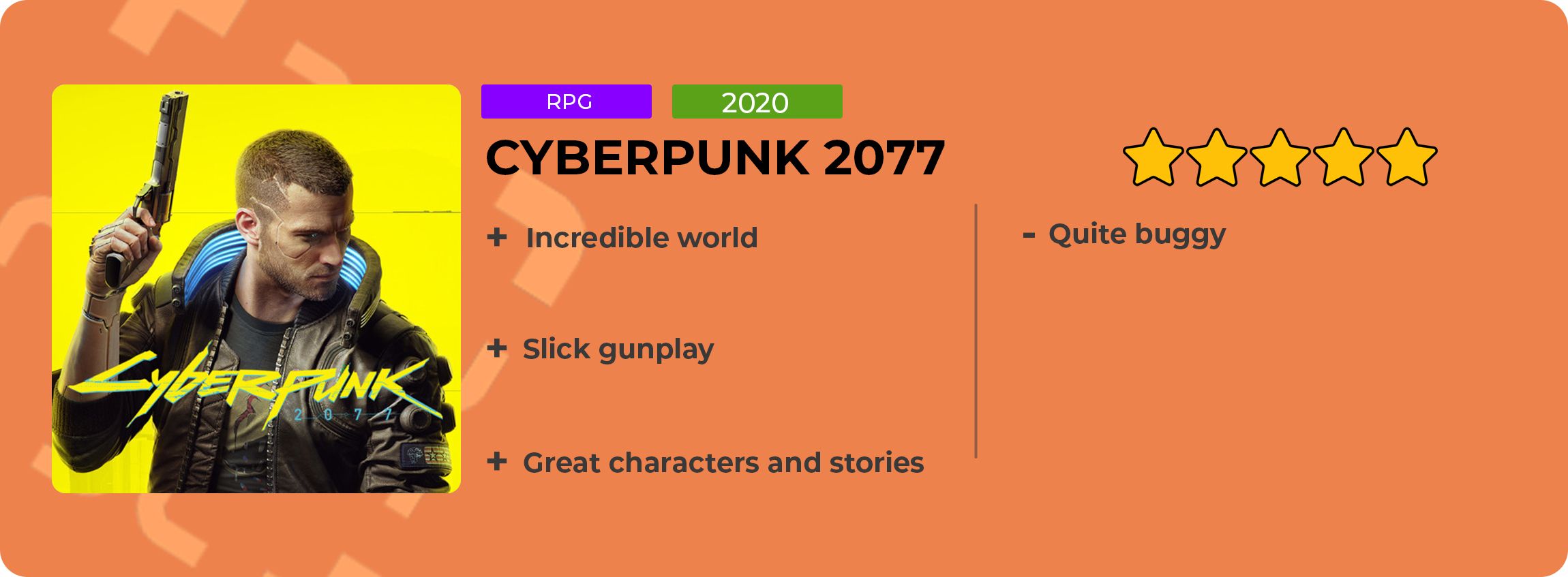You spend more time sitting down than you’d expect in Cyberpunk 2077. While the pre-release trailers ran at a tempo of 60fps (that’s “fucks per second”, fact fans), the actual game is more contemplative, more tender, more restrained. And most importantly - in a world where people carve off parts of themselves and replace them with robotic augmentations - it’s more human.
Like The Witcher 3 before it, Cyberpunk 2077 takes place in a vast open world. It’s not quite as sprawling, but it’s denser than osmium - almost like worlds (that’s plural) stacked on top of one another. While some of it becomes familiar over time, you can never truly know Night City and its spaghetti of back alleys and walkways.
The entire game takes place from the first-person perspective. It brings you in close to appreciate how intricately detailed this place is, whether you’re on foot, in a vehicle - which allows you to switch to third-person if you wish - or you’re a passenger while someone else drives.
As a passenger, you chat with the driver as they ferry you between objectives, looking left to appreciate the emotion and nuance captured in characters’ faces, before turning away to watch Night City whizz by as raindrops patter on the window. You always get the option to skip these journeys, but after 70 hours, I’m still sitting here listening to slow jazz, watching the leaves fall from a holographic cherry blossom tree as lights flicker by. I’m still in awe of this city of broken dreams and shattered bones, grime and chrome, neon and blood.
Landfills box the city in with huge piles of garbage - the bones of unchecked capitalism marking the bounds. These piles of waste are a festering monument to humanity’s entropy and a reflection of future humans themselves, who see their own body as waste and branded robotic replacements as a symbol of status. Beyond those bounds are the Badlands, the deserts surrounding what used to be Los Angeles. Out here in the dust, among the broken wind turbines that stretch up like rusted birch trees, beyond the seemingly endless rows of industrial greenhouses that farm synthetic protein, are the Nomads - roaming clans of Mad Max types who live beyond the reach of the law and one of three optional backstories for your own character.
Inside the city, each district has its own flavour, from the smoky and wartorn abandoned holiday resort of Pacifica to the glitz and glow of Downtown - all of it connected by flyovers, motorways and slip roads that intertwine like the circuitry in a large computer. Architecturally, it’s a marriage between futurism and brutalism, highlighting the contrast between rich and poor - sheer skyscrapers of polished glass and obsidian sheen for the coked-out corpos and impossibly tall megabuildings where the citizens live cramped in ominous concrete blocks. Floating industrial freighters rumble through the sky overhead, beaming down searchlights on the bustle below. It feels like a proper place with proper infrastructure. As soon as you step into Night City and open the doors to one of its bars, nightclubs, or underground ripperdocs, you believe in this place. Just existing here is more captivating than the action sequences in other games. Just being a passenger.
As V, a mercenary who wants to become a Night City legend, you have a passenger of your own, too. Early on, you’re tasked with pulling a heist on one of the largest corporations to steal a prototype biochip. That biochip ends up in your head. The chip contains an engram - a digital personality - of Johnny Silverhand: a rockstar and anti-establishment terrorist who’s been dead for half a century. For the rest of the game, Silverhand - played in his usual staccato style by The Matrix’s Keanu Reeves - lives inside you like a mind parasite. This core relationship, which can be influenced to be either friendly or combative, is what drives the main story forward. It’s also a smart solution to the usual method of having a character voice their internal monologue in an unnatural way - here there’s no need for that because Silverhand constantly pops up to comment, chat, or try to influence you. And who can say no to Keanu Reeves, even if he is a digital tapeworm? The rockerboy is like intrusive thoughts made digital flesh, if your intrusive thoughts wore aviator shades and slouched with an arrogant swagger.
If you’ve played The Witcher 3, you can expect the same standard of writing here. It’s not the brash, juvenile game you might be expecting if you’ve followed the social media conversation - it deals with tough subjects with tact and care. You might find some of it uncomfortable, but it’s a disservice to apply contemporary morality onto an immoral fictional world. Worse things happen in real life, and CD Projekt does a good job of balancing the good and bad side of humanity here. Its main characters are varied and most of them have depth - they don’t just exist to serve you like in some role-playing games. They have their own desires, goals, and even sexual preferences. If you’re planning to shag your way through Night City like it’s a BioWare game, you might be disappointed - people won’t just sleep with you because you’ve finished their questline. It’s more natural than that.
When it comes to representation, Cyberpunk 2077 is ahead of the curve. Here we have a huge triple-A release - one that’s so influential even before release that it gave the entire audience an irrational fear of the colour yellow - that lets you play as a trans character if you wish. Voice type and genitals are completely separate from your body type and you can apply those characteristics as you see fit. I went for a small penis for realism - I thought I’d get that one in before my army of fans do. I strongly believe that imperfect representation is better than none at all, which is how 90% of games approach the issue. If there are missteps, the hope is CD Projekt Red will learn from them for the next game.
We also have to remember that Cyberpunk 2077 isn’t trying to be a game that represents the entire genre of cyberpunk - it’s a game based on a tabletop game called Cyberpunk. It doesn’t have anything particularly profound to say about the topics it touches on, but I struggle to think of many games or movies that do. But it succeeds in its tactfulness and authenticity - it succeeds in its heart.
It’s a bit like the city itself, which feels real on the surface but falls away if you really want to pick it apart. This isn’t a simulated place. Unimportant characters stand in position repeating the same conversations. Follow someone who’s walking down the street and you’ll find they won’t do anything interesting. If you see a gang battling police in the streets, it’s not unique to you - it’s by design. It’s an illusion that you have to meet halfway. A city of smoke and mirrors. But damn, that smoke and those mirrors.
It’s astoundingly pretty, full of reflective surfaces and ray-traced lighting - the first true next-gen experience (if you’re lucky enough to play it on a PC with an RTX 3090 graphics card and an i9-10850K CPU like I did). Random NPCs look as good as main characters in other games, and every single street and back alley is crammed with detail. I think “immersion” is an overused term in video games writing, but there’s not many other ways to say it - Cyberpunk 2077 is like a pair of wraparound shades.
In previews, some compared it to an immersive sim - games like Deus Ex and Dishonored - and I see what they’re getting at. It doesn’t have the interacting systems of an immersive sim, and stealth is a little too barebones, but this is a game that respects your intelligence. The excellent level design elevates the stealth beyond its mechanical simplicity. You get a waypoint marker for the most obvious route in missions, but there are always alternatives. Perhaps you have augmented legs that allow you to jump up through a second-floor window, or maybe you have gorilla arms so you can tear that locked door right open. You can slip in and out of most missions without anybody even knowing you’re there, and it feels incredibly slick when you do it in one smooth attempt. Swapping notes with one of our guide writers, there was one side mission where I had enough points in my intelligence stat to hack open a hotel door. The guides writer didn’t - instead, they booked the room next door and climbed out the window. Stuff like this is why I fired up a second character as soon as the credits rolled.
It’s surprisingly restrained, too. You can choose to play it like a shooter if you want, and you’ll be treated to guns that bounce bullets around corners, katana decapitations, crumbling walls, broken glass, protruding rib cages, and the red mist of a popped skull - all backed by pulse-pounding music. But most conflict can be avoided or circumvented. Much of the game is spent sitting down and talking. In fact, it’s probably the best sitting down and talking to people game ever made. Put that on the box.
The pacing is almost always in your hands. There’s action whenever you want it in the dozens of optional gigs dotted around the map, meaning you can go punch people out of a skyscraper window with your gorilla arms when you need to switch things up. Then the main missions and meaty sidequests are there when you want something deeper - like creeping across the scaffold during a Japantown parade of holographic fish and flying floats, choking out snipers so your friend can creep onboard to kidnap a corpo bigwig. Or there’s the sidequest when you work with a suspended cop to track down a serial killer that grooms teenagers over the internet - the closest Cyberpunk 2077 comes to its own Bloody Baron quest.
Even the missions you see in every other open world game ever made are more interesting here. The obligatory fight club where you travel the map to punch people in the face for money? Yep, it’s got that. But you’ve never fought two twins who melded their minds together so they’re now one person, have you? Some of those smaller gig jobs are incredible, too, taking you to one-off interior locations like high-rise apartments, bars, and nightclubs that are only used for that specific mission - a personal favourite being the Dicky Twister, a gay bar that’s a nod to From Dusk till Dawn. There’s so much here that you can see why it’s been delayed so many times. It’s a little excessive, to be completely honest.
There’s another reason for those delays though. Like with most games that are this complex, Cyberpunk 2077 has its fair share of bugs. None of them ruined my enjoyment, but they pull you out of the fantasy like someone sticking their bare arse in your face while you’re wearing a virtual reality headset.
Sometimes, when I look in a mirror in my apartment, it removes my clothes from the waist down and deletes my dick so I look like a creepy Ken doll. When driving in third-person, my character sometimes T-poses out of the top of my car - again, with no clothes on. Things float in the air and are held in hands at impossible angles. Sometimes NPCs refuse to move and you have to abandon a quest and come back to it later. I also hate how the skip dialogue button is also crouch, which means you sometimes try to engage stealth during a phone call and skip a line of dialogue. You’ll occasionally walk down the street admiring the artistry and you’ll see a car somersaulting through the sky in the distance.
Like the augmented humans of night city, it feels like parts of the world have been welded together and anything not nailed down is like a foreign object the body could reject at any time. There’s nothing game-breaking here and it’s all stuff that can be patched, but expect some weirdness going in.
When it works as it should - which is most of the time - all those issues fall away like tears in the rain. Whether you’re speeding through the Badlands in a rattler (the driving feels responsive and bouncy) or strolling through Night City in the rain (very good rain), it feels like the kind of world only Rockstar has managed to perfect before now. It’s that same level of detail and craft. It’s astounding.
I’m V and the game is Silverhand - I can’t get Cyberpunk 2077 out of my head. I’ve had it a week and played 70 hours, which is probably about as healthy as scooping out my face and replacing it with electronics, but it didn’t feel like work. Like a digital personality loaded onto a biochip, it felt like stepping into another life for a while. It’s a life I can’t wait to relive.
Version tested: PC. A review copy was provided by the developer.

